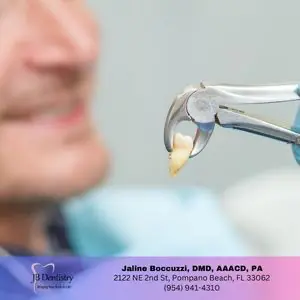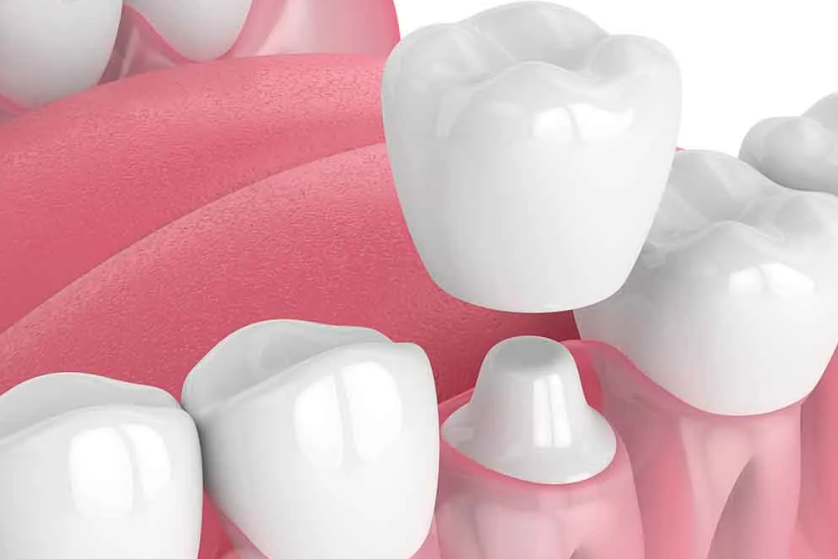Have you recently been told by your dentist that your impacted teeth need to be extracted? While it may sound like a daunting task, impacted teeth extraction is one of the most common dental procedures performed today. The process may seem intimidating, but understanding what to expect during an extraction can help make the experience much less stressful.
Keep reading as we walk you through why extractions are sometimes necessary, what happens during the procedure itself and ways to help with the healing process post-extraction.
What Are Impacted Teeth?
Impacted teeth are teeth that do not emerge through the gumline as they should. This condition typically occurs when there isn’t enough space in the mouth for the tooth to grow naturally. Wisdom teeth, also known as third molars, are the most commonly impacted teeth, but other teeth can also be affected.
Impacted teeth extraction is a dental procedure that frequently addresses teeth that fail to emerge properly through the gum line. While wisdom teeth are commonly associated with impaction, this condition can also affect other teeth in the mouth. The procedure is essential to prevent potential complications and maintain overall oral health.
Impacted teeth extraction is a routine yet crucial dental procedure, preventing potential issues such as infection, pain, damage to adjacent teeth, and more. It is vital in ensuring the patient’s oral health and overall well-being.
Types of Impactions:
- Soft Tissue Impaction: In this case, the tooth has partially emerged through the gum but cannot erupt fully.
- Partial Bony Impaction: The tooth has partly erupted but remains partially encased in the jawbone.
- Complete Bony Impaction: The tooth is entirely encased within the jawbone and cannot blast through the gumline.
How Is Impacted Tooth Extraction Done?
Impacted tooth extraction is a dental procedure to remove teeth that have not emerged properly through the gum line. Here is a step-by-step explanation of how impacted tooth extraction is typically done:
 Evaluation: The process begins with a thorough dental examination, often including X-rays. This evaluation helps the dentist determine the tooth’s position, angle of impaction, and its relation to surrounding structures like nerves or adjacent teeth.
Evaluation: The process begins with a thorough dental examination, often including X-rays. This evaluation helps the dentist determine the tooth’s position, angle of impaction, and its relation to surrounding structures like nerves or adjacent teeth.- Anesthesia: Local anesthesia is commonly administered to ensure the patient’s comfort during the procedure. To a certain extent, particularly in the case of sophisticated extractions or when multiple teeth are involved, general anesthesia or conscious sedation may be used.
- Gum Incision: If the impacted tooth is partially or completely encased in the gum or jawbone, a small incision is made in the gum tissue to access the tooth’s location.
- Tooth Extraction: With the impacted tooth exposed, the dentist carefully removes it. Depending on the tooth’s position and level of impaction, the extraction may involve sectioning the tooth into smaller pieces to facilitate removal, particularly for molars deeply embedded in the jawbone.
- Suturing: The gum tissue is sutured or stitched closed after tooth extraction. Sutures help promote proper healing and minimize bleeding.
- Recovery: The patient is closely monitored as they recover from the effects of anesthesia. Detailed post-operative instructions are provided, typically guidelines for managing discomfort or swelling and education on diet and oral hygiene.
A skilled dentist or oral surgeon conducts the entire impacted tooth extraction procedure with precision and care. Patients are encouraged to follow post-operative careful directions, essential for a speedy and trouble-free recovery.
Is Impacted Tooth Removal Painful?
 The perception of pain during impacted tooth extraction varies from person to person and depends on several factors, including the tooth’s position and the complexity of the procedure. However, most patients experience minimal discomfort during the extraction itself due to the effects of anesthesia.
The perception of pain during impacted tooth extraction varies from person to person and depends on several factors, including the tooth’s position and the complexity of the procedure. However, most patients experience minimal discomfort during the extraction itself due to the effects of anesthesia.
After the procedure, some pain and swelling are typical, but these can be managed with prescribed or over-the-counter pain relievers. It’s essential to follow post-operative care advice from your dentist to reduce pain and speed healing.
Can Impacted Teeth Cause Other Issues?
Impacted teeth can cause several problems if untreated dental and oral health problems. Some potential issues include:
- Infection: Impacted teeth can trap food particles and debris, increasing the risk of disease in the surrounding gums and tissues.
- Pain and Discomfort: Impacted teeth often cause pain, swelling, and discomfort, impacting a person’s quality of life.
- Damage to Adjacent Teeth: Impacted teeth can push against neighboring teeth, causing misalignment or damage.
- Cysts or Tumors: In rare cases, impacted teeth can develop cysts or tumors within the jawbone.
- Gum Disease: Difficulty in cleaning around impacted teeth can result in gum disease, leading to more severe oral health issues.
- Sinus Problems: Impacted upper wisdom teeth can press against the sinuses, leading to sinus pain and congestion.
Given these potential complications, it’s advisable to address impacted teeth promptly through extraction or other appropriate treatments.
What’s the Recovery Process After Extraction?
The recovery process after impacted tooth extraction typically follows a set timeline:
 Immediate Post-Procedure: Patients may experience some bleeding, swelling, and mild discomfort immediately after the procedure. Applying ice packs and taking prescribed or over-the-counter pain relievers as directed can help manage these symptoms.
Immediate Post-Procedure: Patients may experience some bleeding, swelling, and mild discomfort immediately after the procedure. Applying ice packs and taking prescribed or over-the-counter pain relievers as directed can help manage these symptoms.- First Few Days: Swelling and discomfort usually occur within the initial forty-eight hours and then progressively diminish. Following a soft diet and avoiding strenuous activities during this period is essential.
- Stitches Removal: If sutures were used, the dentist typically removes them about one week after the procedure.
- Complete Healing: Full recovery can take several weeks, with the gum tissue gradually healing and any residual discomfort diminishing over time.
- Follow-Up Appointments: Patients should attend made follow-up appointments to ensure that the patient is healing appropriately and to address any issues or difficulties that may come up.
It’s crucial to adhere to post-operative care instructions provided by your dentist to promote a smooth and complication-free recovery.
Seek Professional Dental Care for Impacted Teeth!
Impacted tooth extraction is a common dental procedure to address teeth that have not emerged properly. At Jaline Boccuzzi, DMD, PA // JBDentistry is dedicated to providing safe and effective impacted tooth extraction services.
By understanding the process, potential discomfort, associated issues, and the recovery journey, patients can confidently approach moved tooth extraction, knowing they are taking proactive steps toward maintaining their oral health and overall well-being.
If you believe you have impacted teeth or require an evaluation, don’t hesitate to contact us for expert guidance and care.


